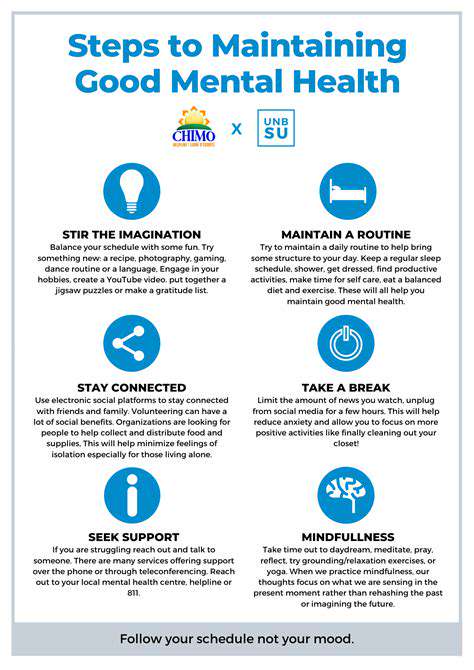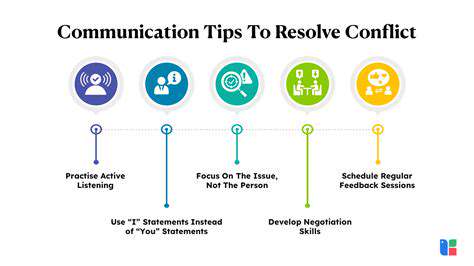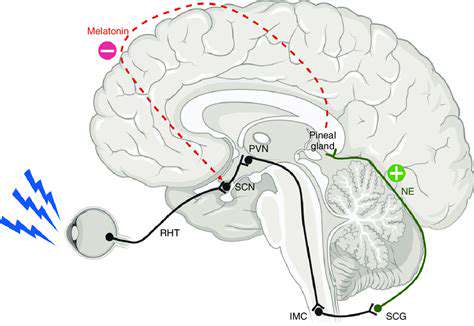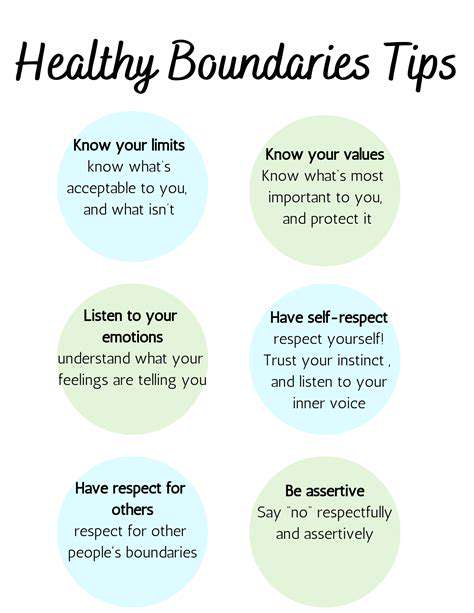Guide to Setting Realistic Health Goals
Understanding the Importance of Gradual Progress
Setting realistic health goals is crucial for long-term success and avoiding burnout. A common mistake is aiming for radical transformations overnight. This approach often leads to disappointment and a quick return to old habits. Instead, focus on small, achievable steps that build upon each other. Think of it as a staircase leading to a healthier lifestyle, not a rocket ship to an immediate destination. Building sustainable habits is key to lasting well-being.
Gradual progress allows your body and mind to adapt to the changes you're making. It reduces the risk of injury, promotes consistency, and fosters a more positive relationship with your health journey. This approach is also more likely to be maintained long-term, leading to lasting improvements in overall health and well-being. It's about establishing a routine that fits seamlessly into your life, not one that feels like a chore.
Connecting Goals to Your Values and Lifestyle
Effective health goals are deeply personal and aligned with your values and lifestyle. Simply mimicking someone else's routine might not be the best approach. Consider what truly matters to you – is it energy levels, stress reduction, improved sleep, or something else entirely? Identifying these personal motivations will make your goals feel more meaningful and increase your likelihood of sticking to them.
Understanding your lifestyle is equally important. Realistic goals need to account for your current commitments, routines, and resources. For example, if you have a demanding job and limited time, incorporating intense workouts might not be realistic. Instead, focus on finding activities that can be integrated into your schedule, such as taking the stairs instead of the elevator or fitting in short bursts of exercise throughout the day.
Considering Individual Needs and Limitations
Every individual has unique needs and limitations. A goal that works for one person might not be suitable for another. Factors like age, existing health conditions, physical abilities, and personal circumstances play a significant role in determining what constitutes a realistic health goal. Ignoring these individual differences can lead to frustration and setbacks. A realistic approach involves tailoring your goals to your specific needs and capabilities.
Acknowledging your physical limitations is essential. Don't push yourself beyond your current capacity. If you're recovering from an injury, for example, your goals should reflect this, perhaps focusing on gentle movement and gradual increases in activity. Seeking guidance from healthcare professionals or fitness experts can help you tailor your goals to your unique circumstances and ensure they're safe and effective.
Tracking Progress and Making Adjustments
Monitoring your progress is key to staying motivated and ensuring your goals remain relevant. Keeping a journal, using fitness trackers, or scheduling regular check-ins with a healthcare professional can help you track your progress. This allows you to see what's working and identify areas needing adjustment. Flexibility is crucial. If you hit a plateau, don't get discouraged. Adjust your approach, modify your goals, or seek support from a professional to help you stay on track.
Be prepared to make adjustments along the way. Life throws curveballs, and unexpected events can impact your health goals. Learning to adapt and modify your goals when necessary is a sign of resilience and commitment to your overall well-being. This process of adaptation and adjustment ensures your goals remain realistic and sustainable throughout your health journey.
Identifying Your Motivations and Values: The Fuel for Your Journey
Understanding Intrinsic Motivation
Intrinsic motivation stems from within, driving us to pursue activities for their inherent satisfaction and enjoyment. This internal drive is crucial for long-term engagement and success. Recognizing intrinsic motivators, such as a passion for learning or a desire for personal growth, provides a powerful foundation for setting meaningful goals and maintaining commitment throughout the journey.
Identifying what truly excites and engages you is key. Reflecting on past experiences and activities that have brought you joy and a sense of accomplishment can unveil hidden intrinsic motivators. This self-awareness is the first step in aligning your actions with your deepest values.
Exploring Extrinsic Motivations
Extrinsic motivations, while often less sustainable than intrinsic ones, can still play a significant role in achieving goals. These motivations come from external factors, such as rewards, recognition, or social approval. Understanding how external factors influence your actions allows you to leverage them strategically.
For instance, setting short-term goals with tangible rewards can be a powerful extrinsic motivator. It's important, however, to remember that relying solely on external motivators can lead to feelings of dissatisfaction and a lack of fulfillment when the external rewards diminish or disappear.
Defining Your Core Values
Your core values are the fundamental principles that guide your decisions and shape your life. Identifying these values is essential because they provide a framework for making choices that align with your deepest desires and aspirations. Understanding your values allows you to prioritize activities and projects that resonate with your core beliefs.
Values such as honesty, integrity, creativity, or compassion can serve as guiding lights, helping you navigate challenges and stay true to yourself. This exploration of personal values is often a deeply reflective process, but the insights gained are invaluable.
Connecting Values and Goals
Once you've identified your core values, the next step is to connect them to your goals. This alignment ensures that your aspirations are not merely superficial desires but rather expressions of who you are and what you believe in. When your goals reflect your values, you're more likely to experience a deep sense of purpose and satisfaction as you work towards them.
By actively seeking opportunities to align your goals with your values, you'll experience a surge of motivation and a greater sense of fulfillment, ultimately driving you to persevere through any challenges that may arise. This connection is the cornerstone of a fulfilling journey.
Analyzing Past Successes and Failures
Reflecting on past successes and failures is a powerful way to identify patterns in your behavior and understand what motivates you. Analyzing past experiences provides valuable insights into your strengths, weaknesses, and preferred approaches to achieving your goals.
Understanding the factors that contributed to past successes, as well as the lessons learned from setbacks, allows you to refine your strategies and make informed decisions for future endeavors. This introspection is crucial for personal growth and setting effective goals.
Recognizing Your Personal Style
Different individuals are motivated by different approaches. Understanding your preferred learning style, working style, and communication style is essential for maximizing your effectiveness and productivity. Identifying your personal style allows you to tailor your strategies and approaches to align with your strengths and preferences.
For example, if you're a visual learner, you might find it more effective to use diagrams or mind maps to organize your thoughts and achieve your goals. Recognizing these preferences empowers you to establish the most conducive environment for success. This personalization will increase your effectiveness.
Staying Motivated During Challenges
Staying motivated throughout your journey is essential for achieving your goals. Acknowledging that challenges are inevitable and developing strategies to overcome obstacles is key. Recognize that setbacks are opportunities for growth and learning.
Building a strong support system, setting realistic expectations, and practicing self-compassion can help you maintain motivation during difficult times. Remember, setbacks are a natural part of any journey, and perseverance is crucial for achieving lasting success.
Plateaus in personal growth, whether in fitness, learning, or any other pursuit, are frustrating periods where progress seems to stall. It's a common experience, and often feels like a setback. This feeling of stagnation can be incredibly disheartening, but it's crucial to understand that plateaus are not necessarily failures, but rather natural checkpoints in the journey. They often signal a need for adaptation and a shift in strategy.

Read more about Guide to Setting Realistic Health Goals
Hot Recommendations
-
*Guide to Managing Gout Through Diet
-
*Best Habits for Financial Well being
-
*How to Build a Routine for Better Mental Health
-
*How to Eat Healthy on a Budget [Tips & Meal Ideas]
-
*Guide to Practicing Self Acceptance
-
*How to Incorporate More Movement Into Your Day
-
*Guide to Managing Chronic Pain Naturally
-
*Guide to Building a Reading Habit for Well being
-
*Top 5 Weight Loss Supplements That Actually Work
-
*Best Exercises for Postpartum Recovery [Beyond Abdominal Work]











